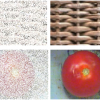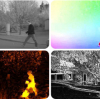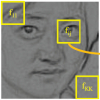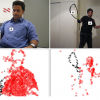ICCV
2009
IEEE
15 years 7 months ago
2009
IEEE
In this paper we propose an algorithm to estimate missing
values in tensors of visual data. The values can be missing
due to problems in the acquisition process, or because
the ...
ICCV
2009
IEEE
15 years 7 months ago
2009
IEEE
The accurate estimation of motion in image sequences is
of central importance to numerous computer vision applications.
Most competitive algorithms compute flow fields
by minimi...
ICCV
2009
IEEE
15 years 7 months ago
2009
IEEE
This paper proposes a new affine registration algorithm
for matching two point sets in IR2 or IR3. The input point
sets are represented as probability density functions, using
e...
ICCV
2009
IEEE
15 years 7 months ago
2009
IEEE
In this paper we present a new method for categorizing
video sequences capturing different scene classes. This can
be seen as a generalization of previous work on scene classific...
ICCV
2009
IEEE
15 years 7 months ago
2009
IEEE
For many applications in graphics, design, and human computer interaction, it is essential to understand where humans look in a scene. Where eye tracking devices are not a viable o...
ICCV
2009
IEEE
15 years 7 months ago
2009
IEEE
We present a novel representation for modeling textured
regions subject to smooth variations in orientation and
scale. Utilizing the steerable pyramid of Simoncelli and
Freeman ...
ICCV
2009
IEEE
15 years 7 months ago
2009
IEEE
We present a robust elastic and partial matching metric
for face recognition. To handle challenges such as pose, facial
expression and partial occlusion, we enable both elastic
...
ICCV
2009
IEEE
15 years 7 months ago
2009
IEEE
This paper introduces an algorithm for detecting walking
motion using point trajectories in video sequences. Given
a number of point trajectories, we identify those which are
sp...
ICCV
2009
IEEE
15 years 7 months ago
2009
IEEE
One of the main limitations of image search based on
bag-of-features is the memory usage per image. Only a few
million images can be handled on a single machine in rea-
sonable ...
ICCV
2009
IEEE
15 years 7 months ago
2009
IEEE
This paper addresses the problem of segmenting lowlevel
partial feature point tracks belonging to multiple motions.
We show that the local velocity vectors at each instant
of th...




